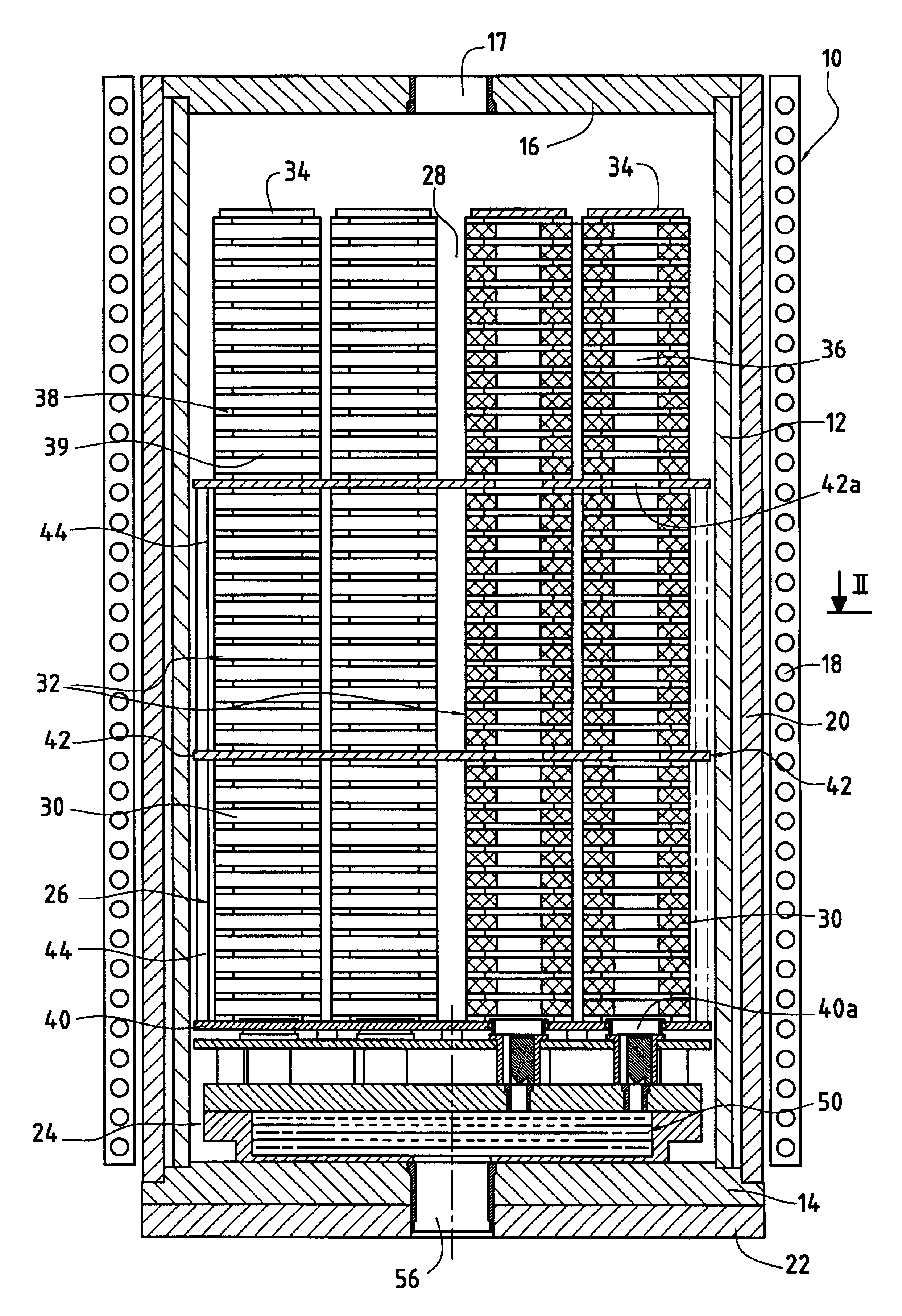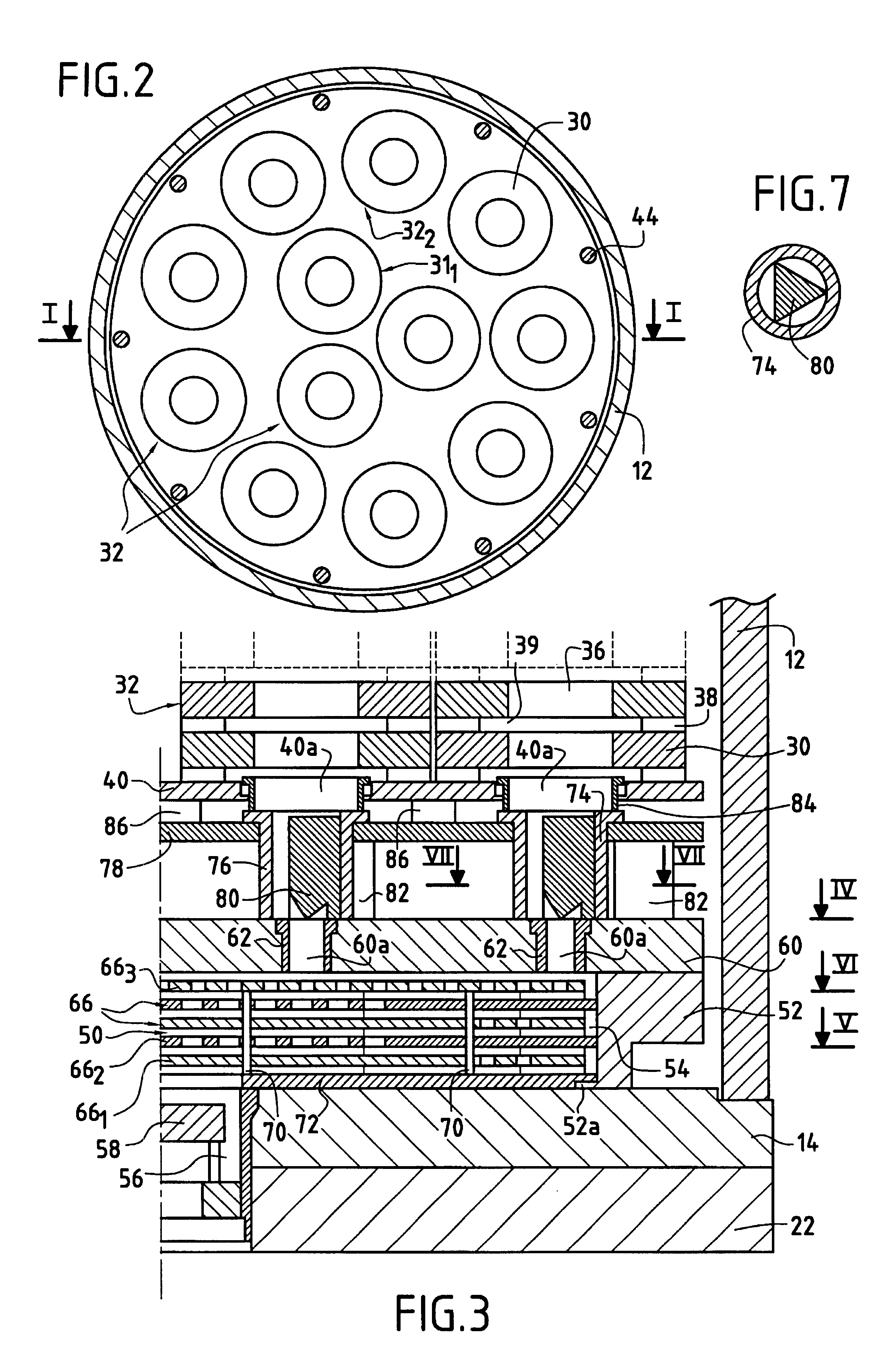Gas preheater and process for controlling distribution of preheated reactive gas in a CVI furnace for densification of porous annular substrates
a technology of preheated reactive gas and cvi furnace, which is applied in the direction of lighting and heating apparatus, furnaces, charge manipulation, etc., can solve the problems of not always as good as desired gas preheater efficiency, temperature gradient not only in the vertical direction, and reduce the loading capacity of substrates, etc., to achieve uniform densification, reduce the effect of temperature gradient, and improve the efficiency of gas preheating
- Summary
- Abstract
- Description
- Claims
- Application Information
AI Technical Summary
Benefits of technology
Problems solved by technology
Method used
Image
Examples
Embodiment Construction
FIGS. 1 and 2 show a furnace 10 having a cylindrical side wall 12 formed by a susceptor, with a susceptor bottom wall 14 and a susceptor top wall 16. The susceptor 12 constitutes a secondary transformer circuit which is inductively coupled with a primary transformer circuit in the form of at least one induction coil 18. Insulation 20 is interposed between the induction coil 18 and the susceptor 12 and further insulation 22 is provided under the susceptor bottom wall 14. The furnace 10 is heated by feeding electrical current to the induction coil 18. As a variant, heating of the susceptor can be carried out by means of electrical resistors thermally coupled thereto.
The internal volume of the furnace 10 comprises a gas preheating zone 24 located at the bottom of the furnace and a reaction chamber or loading zone 26 where porous annular substrates 30 to be densified are loaded, the reaction chamber 26 being located above the preheating zone 24.
The substrates 30 to be densified may cons...
PUM
| Property | Measurement | Unit |
|---|---|---|
| temperature | aaaaa | aaaaa |
| heat conductive | aaaaa | aaaaa |
| internal volumes | aaaaa | aaaaa |
Abstract
Description
Claims
Application Information
 Login to View More
Login to View More - R&D
- Intellectual Property
- Life Sciences
- Materials
- Tech Scout
- Unparalleled Data Quality
- Higher Quality Content
- 60% Fewer Hallucinations
Browse by: Latest US Patents, China's latest patents, Technical Efficacy Thesaurus, Application Domain, Technology Topic, Popular Technical Reports.
© 2025 PatSnap. All rights reserved.Legal|Privacy policy|Modern Slavery Act Transparency Statement|Sitemap|About US| Contact US: help@patsnap.com



